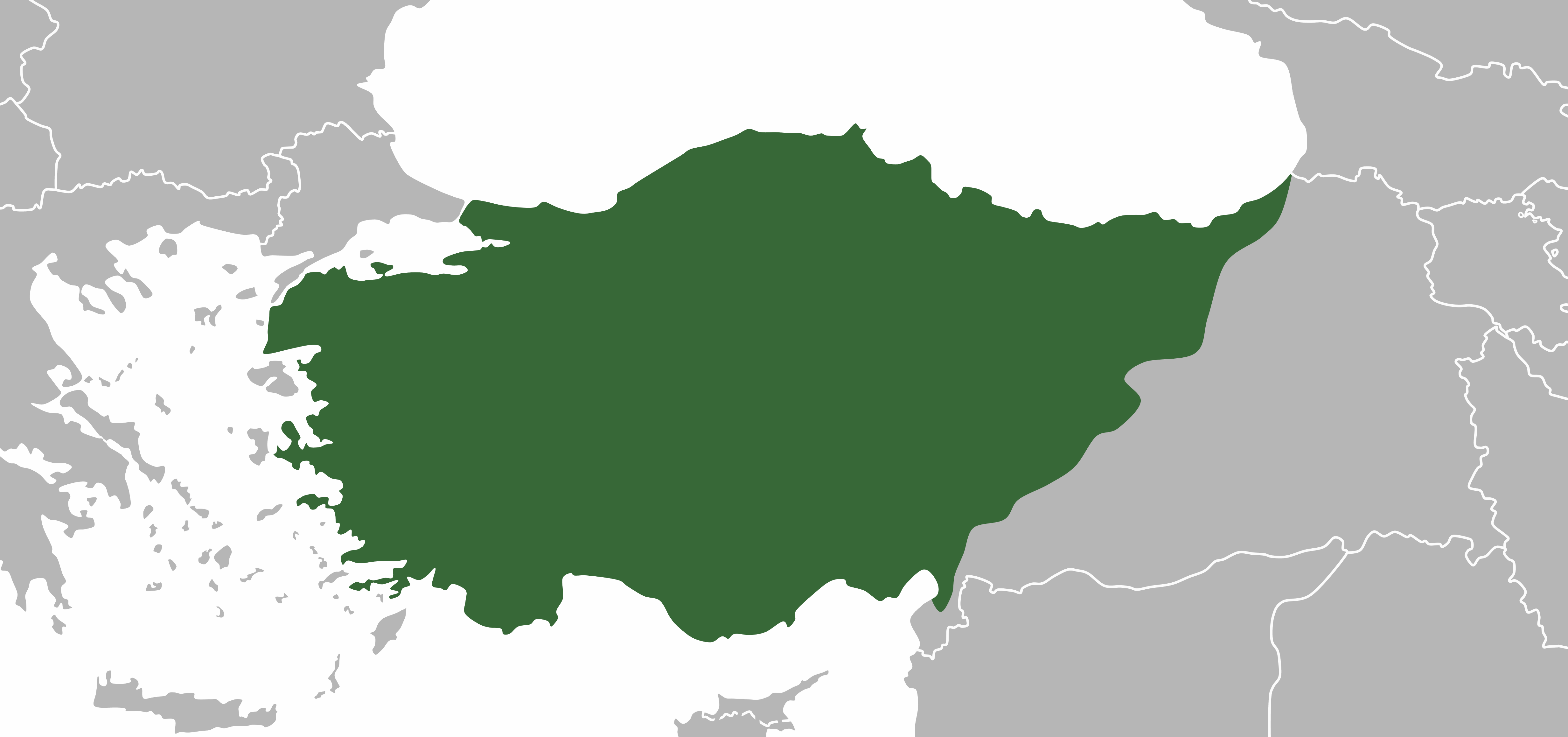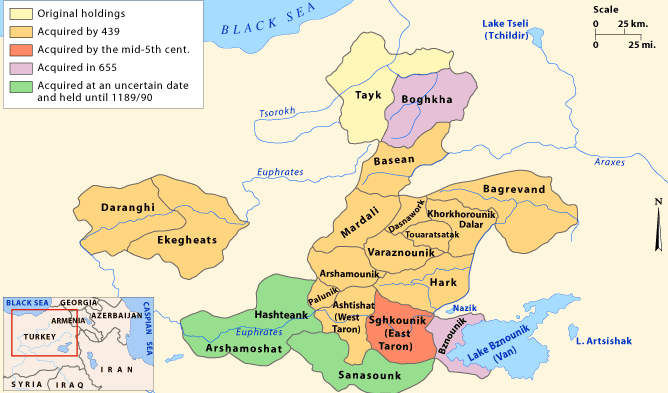|
Hayhurum
Hayhurum (; ) is the name given to Armenian-speaking Christians who are members of the Greek Orthodox Church. Their exact ethnicity has been a source of debate. Some (''although not all'') of these Armenian speakers living in the vicinity of the town of Akn till the 16th century were of Orthodox faith (instead of Armenian Apostolic Church as is the case for most Armenians). There were also a number of people of Greek Orthodox faith among Hamshenis, who are considered to have been converted to Greek Orthodoxy during the late Middle Ages under the rule of the Empire of Trebizond. History Greek Orthodox in faith and Armenian in language, they were called Hayhurums, from the Armenian words, '' Hay'' meaning ''Armenian'', ''hu'' meaning ''and,'' and '' Rûm'' meaning ''Eastern Roman'' or, as it is now called in the West, ''Byzantine,'' denoting the state religion of the Byzantine (Eastern Roman) Empire, which was Greek Orthodoxy. Modern Greek sources seeking to integrate these re ... [...More Info...] [...Related Items...] OR: [Wikipedia] [Google] [Baidu] |
Armenians
Armenians (, ) are an ethnic group indigenous to the Armenian highlands of West Asia.Robert Hewsen, Hewsen, Robert H. "The Geography of Armenia" in ''The Armenian People From Ancient to Modern Times Volume I: The Dynastic Periods: From Antiquity to the Fourteenth Century''. Richard G. Hovannisian (ed.) New York: St. Martin's Press, 1997, pp. 1–17 Armenians constitute the main demographic group in Armenia and constituted the main population of the breakaway Republic of Artsakh until their Flight of Nagorno-Karabakh Armenians, subsequent flight due to the 2023 Azerbaijani offensive in Nagorno-Karabakh, 2023 Azerbaijani offensive. There is a large Armenian diaspora, diaspora of around five million people of Armenian ancestry living outside the Republic of Armenia. The largest Armenian populations exist in Armenians in Russia, Russia, the Armenian Americans, United States, Armenians in France, France, Armenians in Georgia, Georgia, Iranian Armenians, Iran, Armenians in Germany, ... [...More Info...] [...Related Items...] OR: [Wikipedia] [Google] [Baidu] |
Rûm
Rūm ( , collective; singulative: ''Rūmī'' ; plural: ''Arwām'' ; ''Rum'' or ''Rumiyān'', singular ''Rumi''; ), ultimately derived from Greek Ῥωμαῖοι ('' Rhomaioi'', literally 'Romans'), is the endonym of the pre-Islamic inhabitants of Anatolia, the Middle East and the Balkans and date to when those regions were parts of the Eastern Roman Empire. The term ''Rūm'' is now used to describe: *The city of Rome in Italy, and the people living in it. * Remaining pre-Islamic ethnocultural Christian minorities living in the Near East and their descendants, notably the Antiochian Greek Christians who are members of the Greek Orthodox Church of Antioch and the Melkite Greek Catholic Church of Syria, Lebanon, Jordan, Israel, Palestine, and the Hatay Province in Southern Turkey whose liturgy is still based on Koine Greek. * Orthodox Christian citizens of modern Turkey originating in the pre-Islamic peoples of the country, including Pontians from the Black Sea mountains ... [...More Info...] [...Related Items...] OR: [Wikipedia] [Google] [Baidu] |
Greek Orthodoxy
Greek Orthodox Church (, , ) is a term that can refer to any one of three classes of Christian Churches, each associated in some way with Greek Christianity, Levantine Arabic-speaking Christians or more broadly the rite used in the Eastern Roman Empire. * The broader meaning refers to "the entire body of Orthodox (Chalcedonian) Christianity, sometimes also called 'Eastern Orthodox', 'Greek Catholic', or generally 'the Greek Church. * A second, narrower meaning refers to "any of several independent churches within the worldwide communion of (Eastern) Orthodox Christianity that retain the use of the Greek language in formal ecclesiastical settings". In this sense, the Greek Orthodox Churches are the Ecumenical Patriarchate of Constantinople and its dependencies, the Patriarchates of Alexandria, Antioch and Jerusalem, the Church of Greece and the Church of Cyprus. * The third meaning refers to the Church of Greece, an Eastern Orthodox Church operating within the modern borders ... [...More Info...] [...Related Items...] OR: [Wikipedia] [Google] [Baidu] |
Kemaliye
Kemaliye, formerly Eğin (, meaning "spring"), is a town in Erzincan Province in the Eastern Anatolia region of Turkey. It is the seat of Kemaliye District.İlçe Belediyesi , Turkey Civil Administration Departments Inventory. Retrieved 1 March 2023. Its population is 2,536 (2022). The town is known for its historic architecture, including many Ottoman-era houses. It is also notable for its commanding view of the river Karasu (Euphrates) flowing south through a gorge above the |
Greek Orthodox Church
Greek Orthodox Church (, , ) is a term that can refer to any one of three classes of Christian Churches, each associated in some way with Christianity in Greece, Greek Christianity, Antiochian Greek Christians, Levantine Arabic-speaking Christians or more broadly the rite used in the Eastern Roman Empire. * The broader meaning refers to "the Eastern Orthodoxy, entire body of Orthodox (Chalcedonian) Christianity, sometimes also called 'Eastern Orthodox', 'Greek Catholic', or generally 'the Greek Church. * A second, narrower meaning refers to "any of several Autocephaly, independent churches within the worldwide communion of Eastern Orthodox Church, (Eastern) Orthodox Christianity that retain the use of the Greek language in formal Sacred language#Christianity, ecclesiastical settings". In this sense, the Greek Orthodox Churches are the Ecumenical Patriarchate of Constantinople and its dependencies, the Patriarchates of Greek Orthodox Patriarchate of Alexandria, Alexandria, Greek Or ... [...More Info...] [...Related Items...] OR: [Wikipedia] [Google] [Baidu] |
Religion In Armenia
As of 2011, most Armenians in Armenia are Christians (97%) and are members of the Armenian Apostolic Church, which is one of the oldest Christian churches. It was founded in the 1st century AD, and in 301 AD became the first branch of Christianity to become a state religion. Demographics Approximately 98.1% of the country's population is ethnically Armenians, Armenian, the vast majority of whom belong to the Armenian Apostolic Church. According to a survey done by the Pew Research Center, 51% of adults in Armenia are "highly religious", and the survey ranked Armenia as the second-most religious out of 34 European countries, after Romania. 79% of Armenians surveyed reported that they believe in God with "absolute certainty", and 53% consider religion very important in their lives. Geographic distribution Yazidis are concentrated primarily in agricultural areas around Mount Aragats, northwest of Yerevan. They live in 19 villages in the Aragatsotn Province, two villages in the Ar ... [...More Info...] [...Related Items...] OR: [Wikipedia] [Google] [Baidu] |
Hidden Armenians
Hidden Armenians (; ) or crypto-Armenians () is an umbrella term to describe Turkish citizens hiding their full or partial Armenian ancestry from the larger Turkish society. They are mostly descendants of Ottoman Armenians who, at least outwardly, were Islamized (and Turkified or Kurdified) "under the threat of physical extermination" during the Armenian genocide. Turkish journalist Erhan Başyurt describes hidden Armenians as "families (and in some cases, entire villages or neighbourhoods) ..who converted to Islam to escape the deportations and death marches f 1915 but continued their hidden lives as Armenians, marrying among themselves and, in some cases, clandestinely reverting to Christianity." According to the 2012 European Commission report on Turkey, a "number of crypto-Armenians have started to use their original names and religion." ''The Economist'' suggests that the number of Turks who reveal their Armenian background is growing. In Turkish, they are referred ... [...More Info...] [...Related Items...] OR: [Wikipedia] [Google] [Baidu] |
Kemaliye District
Kemaliye District is a district of the Erzincan Province of Turkey. Its seat is the town of Kemaliye.İlçe Belediyesi , Turkey Civil Administration Departments Inventory. Retrieved 1 March 2023. Its area is 1,207 km2, and its population is 5,170 (2022). Composition There is one in Kemaliye District: * There are 61 in Kemaliye District:[...More Info...] [...Related Items...] OR: [Wikipedia] [Google] [Baidu] |
Kocaçimen, Kemaliye
Kocaçimen is a village in the Kemaliye District of Erzincan Province Erzincan Province (; ; ) is a Provinces of Turkey, province in the Eastern Anatolia Region of Turkey. In Turkey, its capital is also called Erzincan. Its area is 11,815 km2, and its population is 239,223 (2022). Geography Erzincan is trav ... in Turkey. Its population is 14 (2022). References Villages in Kemaliye District {{Kemaliye-geo-stub ... [...More Info...] [...Related Items...] OR: [Wikipedia] [Google] [Baidu] |
Esertepe, Kemaliye
Esertepe is a neighbourhood of the town Kemaliye, Kemaliye District, Erzincan Province, Turkey Turkey, officially the Republic of Türkiye, is a country mainly located in Anatolia in West Asia, with a relatively small part called East Thrace in Southeast Europe. It borders the Black Sea to the north; Georgia (country), Georgia, Armen .... Its population is 13 (2022). References Kemaliye Neighbourhoods in Erzincan Province {{Kemaliye-geo-stub ... [...More Info...] [...Related Items...] OR: [Wikipedia] [Google] [Baidu] |
Armenian Language
Armenian (endonym: , , ) is an Indo-European languages, Indo-European language and the sole member of the independent branch of the Armenian language family. It is the native language of the Armenians, Armenian people and the official language of Armenia. Historically spoken in the Armenian highlands, today Armenian is also widely spoken throughout the Armenian diaspora. Armenian is written in its own writing system, the Armenian alphabet, introduced in 405 AD by Saint Mesrop Mashtots. The estimated number of Armenian speakers worldwide is between five and seven million. History Classification and origins Armenian is an independent branch of the Indo-European languages. It is of interest to linguists for its distinctive phonological changes within that family. Armenian exhibits Centum and satem languages, more satemization than centumization, although it is not classified as belonging to either of these subgroups. Some linguists tentatively conclude that Armenian, Greek ... [...More Info...] [...Related Items...] OR: [Wikipedia] [Google] [Baidu] |
Tunceli Province
Tunceli Province (), formerly Dersim Province (; ; ), is a province in the Eastern Anatolia Region of Turkey. Its central city is Tunceli. The province has a Kurdish majority. Moreover, it is the only province in Turkey with an Alevi majority. The province has eight municipalities, 366 villages and 1,087 hamlets. History Antiquity This region was known as Ishuva in the 2000s BC. As a result of the struggle of the Ishuva Kingdom, which was established by the Hurrians in the region, with the Hittites, the region came under the rule of the Hittites in the 1600s BC. Then, it came under the domination of the Urartians and formed the westernmost part of the country of Urartu. After that, it was ruled by Medes and the Persian Achaemenid Empire, and after that it was ruled by Alexander the Great, king of Macedon. Ottoman Empire rule Although the presence of Ottoman Empire was beginning to be felt in the region after Mehmed II the Conqueror defeated the Aq Qoyunlu in 1473, ... [...More Info...] [...Related Items...] OR: [Wikipedia] [Google] [Baidu] |




